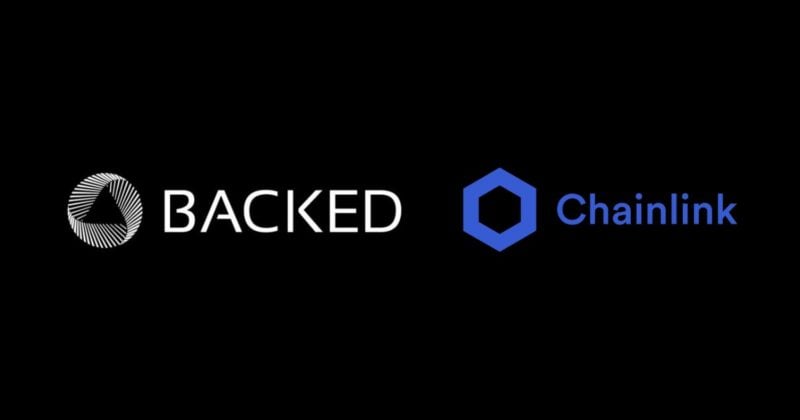\Attracting angel investors in today’s competitive startup landscape requires innovative strategies that go beyond traditional pitches. This article presents cutting-edge approaches, backed by expert insights, to help founders stand out and secure crucial funding. From AI-powered personalization to evidence-based demonstrations, these methods offer fresh perspectives on engaging investors and showcasing your startup’s true potential.
AI-Powered Personalized Pitch Engages Investors
Evidence-First Approach Showcases Working Prototypes
Deep Industry Research Creates Early Champions
Interactive Investor Hub Transforms Due Diligence
Bootstrapping Success Attracts Strategic Angels
Transparent Operations Demonstrate Proven Results
Real-Time Dashboard Builds Investor Trust
Technical Proof Tour Replaces Traditional Pitch
Front-Loaded Revenue Validates Market Demand
Emotional Storytelling Connects With Investors
Customer Experience Focus Demonstrates Value
Founder-Led Marketing Builds Pre-Pitch Momentum
Behind-the-Scenes Day Shows Real Impact
Proof-of-Concept Approach Secures Domain Funding
Data-Driven Deck Balances Vision With Execution
Interactive Demo Lets Investors Experience Product
#mc_embed_signup{background:#fff; false;clear:left; font:14px Helvetica,Arial,sans-serif; width: 600px;}
/* Add your own Mailchimp form style overrides in your site stylesheet or in this style block.
We recommend moving this block and the preceding CSS link to the HEAD of your HTML file. */
Sign Up for The Start Newsletter
(function($) {window.fnames = new Array(); window.ftypes = new Array();fnames[0]=’EMAIL’;ftypes[0]=’email’;fnames[1]=’FNAME’;ftypes[1]=’text’;fnames[2]=’LNAME’;ftypes[2]=’text’;fnames[3]=’ADDRESS’;ftypes[3]=’address’;fnames[4]=’PHONE’;ftypes[4]=’phone’;fnames[5]=’MMERGE5′;ftypes[5]=’text’;}(jQuery));var $mcj = jQuery.noConflict(true);
AI-Powered Personalized Pitch Engages Investors
I used AI-powered, hyper-personalized, interactive storytelling to attract angel investors, which completely differentiated me from other founders using generic pitch decks. Instead of sending the same static presentation to everyone, I leveraged AI tools to analyze each potential investor’s background, portfolio history, and interests, then automatically customized my pitch narrative, examples, and slide ordering to match what they specifically cared about.
I created interactive digital presentations with embedded videos, clickable case studies, and dynamic data charts that investors could explore themselves. The AI also A/B tested different versions of my outreach to continuously optimize what resonated most with different investor types.
This approach made each investor feel uniquely understood — they saw their own investment thesis and portfolio analogies referenced directly in my pitch. The result was significantly higher meeting conversion rates and investors who were genuinely aligned with my mission from the start.
Neevai Esinli, Founder and CEO, Esinli Capital
EquityNet
RAISE CAPITAL
Use flat-fee crowdfunding with no commissions.
Raise business capital of $100K to $100M.
Connect directly with accredited investors.
Evidence-First Approach Showcases Working Prototypes
To be honest, when we first went out to attract angel investors, I knew we couldn’t just compete on the usual pitch deck metrics: market size, revenue projections, and hockey-stick graphs. Every founder has those slides. What differentiated us was an evidence-first approach: instead of selling only a vision, we showcased working prototypes and client traction built on a lean budget.
One innovative move was bringing an angel into a live demo session with a prospective client. They saw, in real time, how our AI-powered document parsing engine solved a pain point the client had been struggling with for months. It wasn’t just a pitch; it was proof of market validation unfolding in front of them.
That experience did two things: it de-risked their perception of us (“this isn’t just an idea, it’s already working”) and it highlighted our culture of resourceful execution. In a market where many founders overpromise, we stood out by showing tangible outcomes before asking for capital.
My advice for other founders: don’t just sell investors the future; let them witness the present working at scale. That kind of credibility can cut through the noise.
Naresh Mungpara, Founder & CEO, Amenity Technologies
A Tool to Find the Right Loan or Grant for Your Small Business
Deep Industry Research Creates Early Champions
Before writing a single line of code, I interviewed more than 250 enterprise leaders, startup founders, and agency owners in our space. These conversations weren’t about pitching; they were about listening, validating problems, and sharing a glimpse of where I believed the industry was headed.
This approach paid off in two ways. First, it gave us deep conviction that we were solving a real, high-value problem. Second, it created early champions who felt like part of our journey from day one. By the time we launched our MVP and onboarded our first enterprise client, many of those original conversations came full circle; some became our customers, and others became our angel investors.
The differentiator was trust. Instead of approaching investors cold, we re-engaged people who had already seen our thought process, adaptability, and execution in action. They weren’t betting on a pitch deck; they were investing in a journey they’d already been part of.
Mustafa Saeed, Co-Founder, CEO, Luella
How to Raise Money You Don’t Have to Pay Back
Interactive Investor Hub Transforms Due Diligence
Instead of chasing investors with a pitch deck, we built an investor onboarding experience — almost like a customer onboarding journey. We created a private online hub where potential angel investors could “trial” our company, in a sense. It included interactive dashboards displaying key metrics, client testimonials in video form, and a behind-the-scenes tour of our team’s workflow.
We didn’t want this to be just data dumped in a folder — so, we turned it into a curated, story-driven path that allowed them to explore our traction, culture, and plans at their own pace. By the time we got on a call with our potential angel investors, they already felt like part of the company and could focus on strategic discussions rather than basic due diligence. It stood out because we weren’t pitching to them — we were letting them experience the business before investing.
Orest Chaykivskyy, Co-Founder & Chief Commercial Officer, Forbytes
Bootstrapping Success Attracts Strategic Angels
One thing that worked for us early on was flipping the timing. Most founders start chasing investors before they’ve proven much. We did the opposite, we bootstrapped for about nine months, got paying customers, and even hit profitability before talking to anyone.
That changed the whole dynamic. Instead of selling a dream on a pitch deck, we were showing real numbers and a working business. It also meant we could be selective and look for angels who could add strategic value, not just capital.
It set us apart because the conversation wasn’t, “Will this work?” but, “How big can we make this?” That shift made it easier to get the right people on board, people who were excited to help us scale rather than just take a bet.
Gustav Westman, Founder & CEO, Niora AI
What is Seed Money and How Can Entrepreneurs Get It?
Transparent Operations Demonstrate Proven Results
I knew I had to cut through the noise. I also knew that most founders walk into meetings with decks full of projections and vague promises. So I did the opposite. I brought investors into our office and walked them through projects we had already delivered, both hardware and software. Instead of talking about future potential, I showed them the infrastructure we had already built, the systems already running, and the clients already paying us.
I followed a simple logic: if I wanted them to fund us as a complete tech solution, they needed to see that we could actually provide end-to-end results. One move I made was opening our internal dashboards for a full day. Investors could examine live project timelines, budgets, and even how we tracked resource allocation across teams. It was a risky move, I know. They could spot delays or bottlenecks, but it worked.
One investor even told me later that this transparency separated us from every other founder they met. They could already see we had systems, processes, and actual revenue flowing through proven operations. And that’s what convinced them to write the check.
Michal Kierul, CEO & Tech Entrepreneur, InTechHouse
Real-Time Dashboard Builds Investor Trust
I’ve used a transparent performance dashboard during conversations, showing metrics like client wins, SEO traffic growth, and conversions updated in near real-time. It transformed our pitch from a static presentation into a data-driven experience. That transparency built trust, shortened our sales cycles, and made investors feel confident because they could see the momentum unfolding, not just read about it.
Taylor Humphries, CEO, Ranked
Technical Proof Tour Replaces Traditional Pitch
One approach that made a significant difference for us when attracting angel investors was offering a “technical proof tour” instead of a traditional pitch deck. Rather than walking investors through slides filled with projections and TAM graphs, we invited them to participate in a guided walkthrough of our internal QA tools, dashboards, and test automation pipelines in action — real code, real use cases, real client outcomes.
This wasn’t just a demo; it was a narrative. We showed how our system flagged a critical checkout bug for a client before it hit production, and how that saved them thousands in cart abandonment. We didn’t just talk about product-market fit; we demonstrated how the product actually worked under pressure, and why clients trusted it.
What differentiated us? Most founders try to convince investors with future potential. We brought them into the present reality — our traction, velocity, and operational maturity spoke louder than projections.
The biggest lesson here: investors bet on clarity and conviction. When you let them feel the problem and see the solution live, they remember you not as a pitch, but as proof. That built trust faster than any hockey-stick graph ever could.
Shishir Dubey, Founder & CEO, Chrome QA Lab
Startup Financing: From Traditional Loans to Innovative Solutions
Front-Loaded Revenue Validates Market Demand
I would argue that the boldest move a founder can make is to skip hypothetical forecasts and walk into the room with real, verifiable, front-loaded revenue. If a founder pre-sells 500 subscriptions at $200 each before product launch, that $100,000 in upfront cash is the loudest proof an angel investor wants. Most founders hype potential; the ones who collect cash before launch are a different species entirely. Preorders, beta fees, or corporate LOIs can replace years of slide decks and vanity KPIs. When founders do this, they shift from pitching an idea to offering a stake in validated demand. That is all angels need to take a second meeting.
Some people think innovation means AI or blockchain. I would say the better innovation is economic simplicity. Take the investor’s lens, and ask what they want: return, liquidity, de-risked entry. Offer one of those early. If a founder walks in and says, “We have 12 companies signed to $10K annual contracts starting next quarter,” angels listen. It positions the founder as a risk-reducing operator, not just a dreamer. In a world of 1,000 pitches, the guy who brings real cash from real buyers breaks through.
Guillermo Triana, Founder and CEO, PEO-Marketplace.com
Emotional Storytelling Connects With Investors
My approach to angel investor engagement involved presenting the traditional pitch in a new way through storytelling that resonated with their emotions instead of using conventional presentations. A short video presented real customers who described their difficulties with outdated insurance systems and how our AI platform transformed their lives positively. I provided investors with direct access to our user-friendly technology through live demonstrations during meetings, which made the solution feel both real and urgent. The approach demonstrated our product while creating emotional bonds that converted investor curiosity into strong belief in our mission. My human-centered approach established partnerships that advanced our mission to transform insurance.
Your pitch will become unforgettable when you create a story that emotionally connects with investors while using authentic human experiences to bring your solution to life. Present a powerful customer narrative through a brief video instead of using statistics to demonstrate the essence of your solution. Investors should experience your product directly through a demo that creates a personal and engaging connection. Each investor requires a customized approach because you should understand their interests and previous investments to create a dialogue instead of a sales presentation. Your venture should be presented as a mission that investors can join to transform lives while becoming part of a larger story.
André Disselkamp, Co-Founder, Insurancy
Verizon Small Business Digital Ready
Find free courses, mentorship, networking and grants created just for small businesses.

Customer Experience Focus Demonstrates Value
To attract angel investors, I made customer experience the focus of my pitch. Instead of just talking about what our products do, I showed how our product helps improve many people’s daily lives. I shared detailed stories we had from our customers, both businesses and everyday people, who used our standing desks and ergonomic chairs to help them become generally healthier and more productive.
We had a corporate client who told us that switching from ordinary desks to our standing desks led to an 11% reduction in employee sick days due to fewer posture and back pain-related complaints. One of our customers is a content creator who told us that our chairs allowed him to focus for much longer periods without discomfort. It enabled him to gain a higher overall work output than he had previously achieved.
I used numbers and real-life experiences to strengthen my case. Investors saw our value beyond the product, as it was already improving the way people worked. This has helped me stand out from others who only spoke in broad terms without backing up their claims.
John Beaver, Founder, Desky
Founder-Led Marketing Builds Pre-Pitch Momentum
Instead of pitching angel investors with a generic deck, I focused on founder-led marketing. I built an audience first by sharing our journey, the struggles, user stories, and my vision for AI in mental health. By the time I spoke with angel investors, they already understood the problem and believed in the mission. That differentiated me from founders who only show up when they’re asking for money. Investors don’t just back an idea; they back the momentum behind it.
Ali Yilmaz, Co-founder&CEO, Aitherapy
Behind-the-Scenes Day Shows Real Impact
Our behind-the-scenes day involved inviting potential angel investors to the clinic to meet patients (with their consent), chat with staff, and observe our treatment process. They would not hear things happen, but see them, including the environment, the technology we employ, and the pattern of care delivery. It assisted in bringing our expansion to life, and it gave them a personal emotional appeal to the cause.
The thing that made us different was that we focused on impact rather than profit during the visit. We presented a positive patient experience, demonstrated clinical workflows in a real-life context, and discussed the barriers to delivering specialized care. By depicting to them a place where their investment would have a quantifiable impact on the lives of patients, we transformed a financial pitch into a shared promise to increase their investment in bringing healthcare to more patients.
Ben Waismann, CEO, ANR Clinic
Proof-of-Concept Approach Secures Domain Funding
Instead of pitching investors with just ideas and projections, we took a proof-of-concept approach by securing a brand name with strong search potential and building initial traction before seeking funding.
This is our actual case study: we built PRpackages.io with minimal investment to rank for the term and built cheaper backlinks to it to demonstrate real market interest and search traffic.
Our goal was specific: funding to acquire the premium PRpackage.com domain to strengthen our brand positioning and build a comprehensive platform for brands and influencers.
Once we had traffic and validation metrics, we reached out to an angel investor to fund the acquisition of the premium .com domain to solidify our brand positioning and build a real platform.
This approach set us apart from other founders who rely on pitch decks and projections.
Victor Hsi, Founder & Community Manager, PR Package
Data-Driven Deck Balances Vision With Execution
One of the strategies I implemented was to develop a data-driven investor deck that tied financial projections to presentable market trends and customer acquisition metrics. Instead of putting out broad-based growth projections, I presented proof of performance via real-time dashboards of user engagement and cost per acquisition, which we updated regularly. This transparency not only gave investors confidence in the scale of our model but also allowed us to present our detailed financials, which supported our go-to-market strategy.
It was different in that most founders present only their vision for the future; instead, I positioned my startup as a combination of visionary and execution-ready from day one. I backed the pitch up with tangible and proven elements, which in turn presented a lower risk for investors and simultaneously demonstrated great operational discipline. That balance of big-picture thinking with careful financial management made the startup stand out to those angels who invest not only in big returns but also in managed risk.
Nathan Barz, Financial Advisor, Management Expert, SEO Founder and CEO, DocVA
Interactive Demo Lets Investors Experience Product
I run a sex education startup, and I transformed investor outreach into a hands-on “Consent Sprint.” Instead of a static deck, I sent angel investors a 7-minute interactive demo: a boundary-setting mini-game, an AI role-play that simulates challenging partner conversations, and a Yes-No-Maybe planner that adapts to choices in real time. A live leaderboard displayed therapist benchmark scores, and I opened a 72-hour window with a small early allocation for anyone who beat the benchmark. One invite unlocked a “pro” diligence kit — a nod to viral referral mechanics — so interested angels quickly pulled in peers.
To prime the funnel, I posted a 36-second clip from a workshop where our “green-flag meter” reached 92% after a communication drill. It garnered 148,000 views in 4 days, 1,900 shares, and 117 investor signups. Results: 43 angels completed the sprint (average 11 minutes), 19 requested the data room, and I received 2 term sheets in 9 days.
This set me apart because investors didn’t just hear me claim product-market fit — they experienced it. They felt user psychology, community energy, and our ability to spark engagement on demand, which is exactly what I’d need their money to scale.
Clara Whitlow, Women’s Wellness Coach and Sex Educator, Clara Whitlow
Image by Drazen Zigic on Freepik
17 Lessons Learned from Pitch Deck Revisions for Angel Investor Feedback
The post 16 Innovative Approaches to Attract Angel Investors and Stand Out from Other Founders appeared first on StartupNation.























